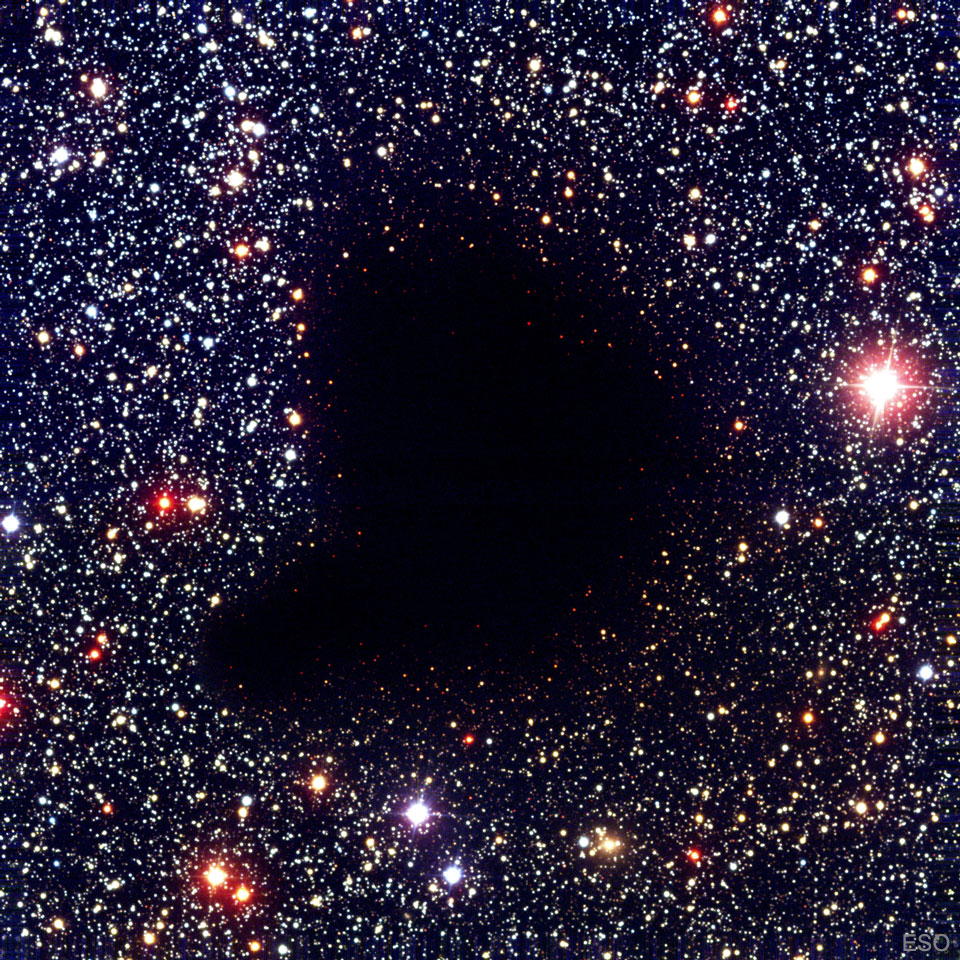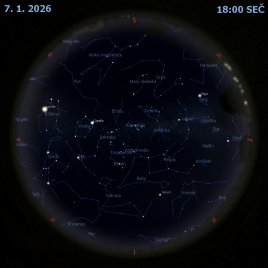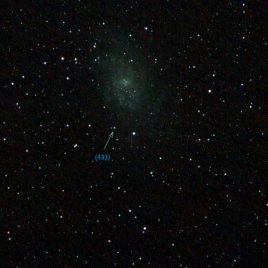Barnard 68: Temné molekulární mračno

Uznání: FORS Team, 8.2-meter VLT Antu, ESO
Kam se poděly všechny hvězdy? To, co se dříve považovalo za díru na obloze, je dnes astronomům známo jako tmavý molekulární mrak. Vysoká koncentrace prachu a molekulárního plynu zde z hvězd v pozadí pohlcuje prakticky veškeré viditelné světlo. Pochmurně temné okolí přispívá k tomu, že vnitřek molekulárních mračen patří k nejchladnějším a nejizolovanějším místům ve vesmíru. Jednou z nejpozoruhodnějších těchto temných absorpčních mlhovin je oblak na obrázku v souhvězdí Hadonoše (Ophiucha) známý jako Barnard 68. To, že uprostřed nejsou vidět žádné hvězdy, naznačuje, že Barnard 68 je poměrně blízko, podle měření je asi 500 světelných roků daleko a má rozměr půl světelného roku. Jak molekulární mračna jako je Barnard 68 vznikají není přesně známo, ví se ale, že tyto mraky samotné jsou nejspíš místy vznikání nových hvězd. Zjistilo se, že samotný oblak Barnard 68 se ve skutečnosti smršťuje a dává vzniknout novému hvězdnému systému. Oblak je možné naskrz přímo prohlédnout v infračerveném světle.
Seznam odkazů v popisu
- Wikipedia: Molecule
- APOD: 2003-07-06 Fraktální mezihvězdný prach zblízka
- APOD: 1997-04-30 __molekulárního_plynu_
- NASA: Visible Light
- Youtube.com: Star formation by collapse of molecular clouds
- Ggpht.com: Foto: Osamělý dům na ostrově
- APOD: Dark Nebulae
- ESO.org: How to Become a Star - ESO Telescopes Provide Most Detailed View Ever Into a Dark Cloud
- Wikipedia: Ophiuchus
- Wikipedia: Barnard_68
- Wikipedia: Edward_Emerson_Barnard
- NASA: What is a light-year and how is it used?
- SWIN.edu.au: Molecular Cloud
- ESO.org: Secrets of a dark cloud
- Ytimg.com: Foto: Tři psi :-)
- APOD: 2020-12-06 M16: Pilíře stvoření hvězd
- APOD: 2022-10-20 Sloupy stvoření
- NASA: Stars
- UniverseToday.com: Astronomers Predict Birth of a New Star
- Harvard.edu: The Inevitable Future of the Starless Core Barnard 68
- ESO.org: Secrets of a Dark Cloud - Unique Infrared SOFI Images of Barnard 68 Probe the Very First Stages of Star Formation
- NASA: Infrared Waves
NASA Official: Phillip Newman Specific rights apply. NASA Web Privacy Policy and Important Notices
A service of: ASD at NASA / GSFC & Michigan Tech. U.
Odkaz na originální APOD


